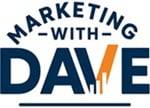7 Lessons from The Intern (2015) Movie: What This Business Comedy Still Gets Right 10 Years Later
If it has been more than 10 years since I saw a movie, it might as well be brand new to me. So, when my daughter recently recommended The Intern, I gave it another watch — and I am glad I did. I had already rated it an 8 back when it came out, which is higher than its 7.1 score on IMDb. It did not take long to remember why. It is not just a charming film with great performances. It is a great movie about the business world — about startup chaos, leadership choices, generational wisdom, and the
